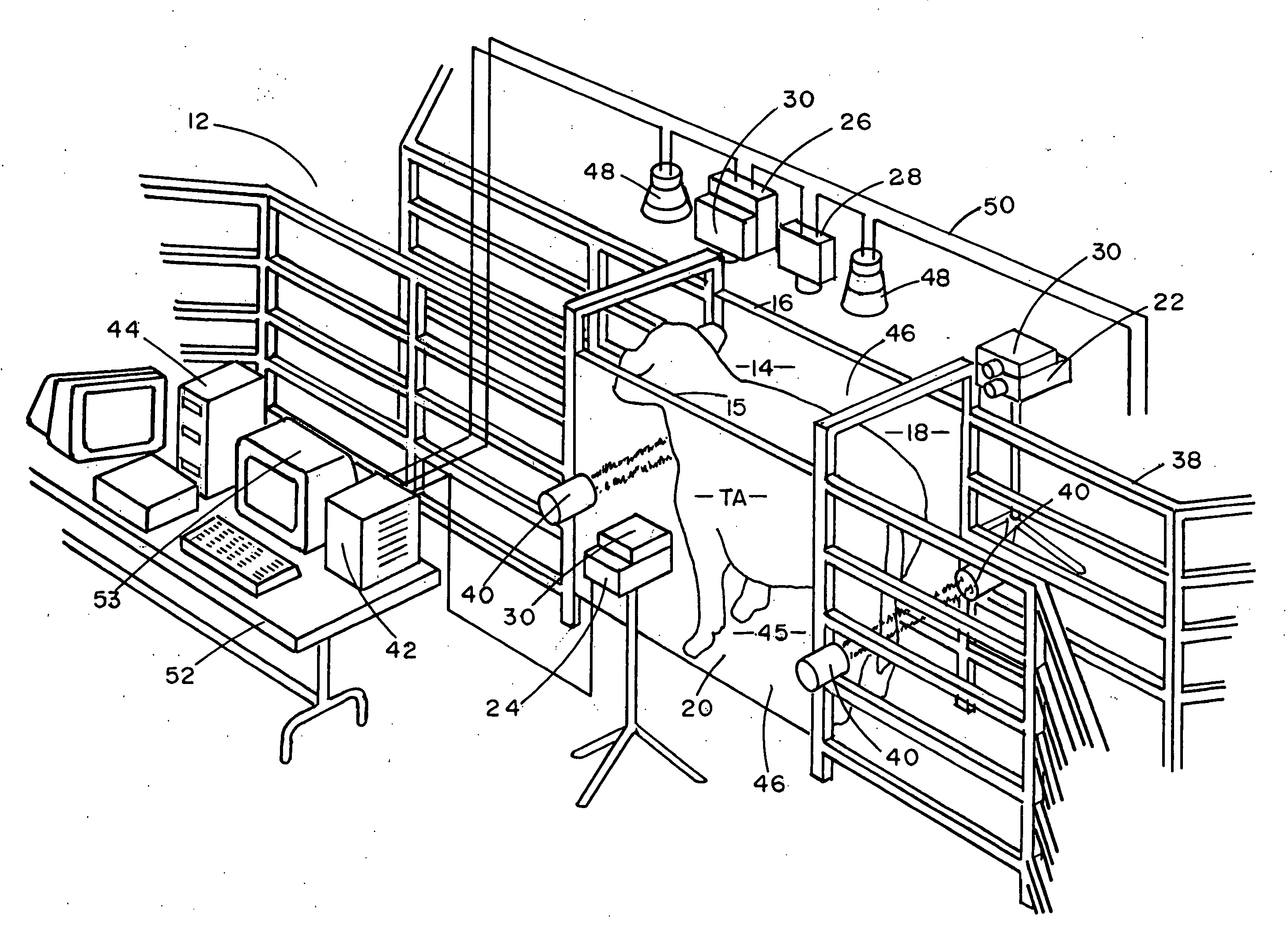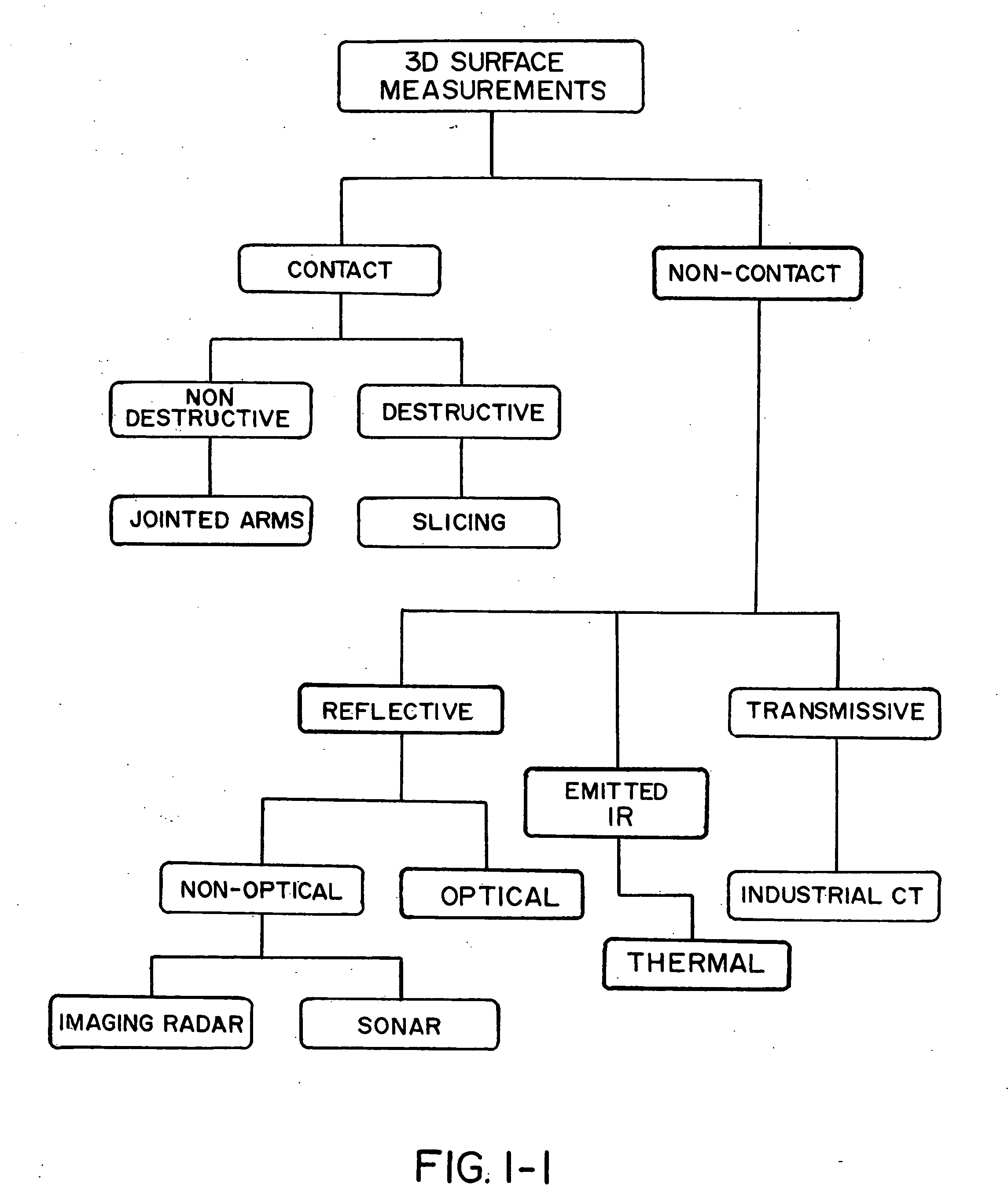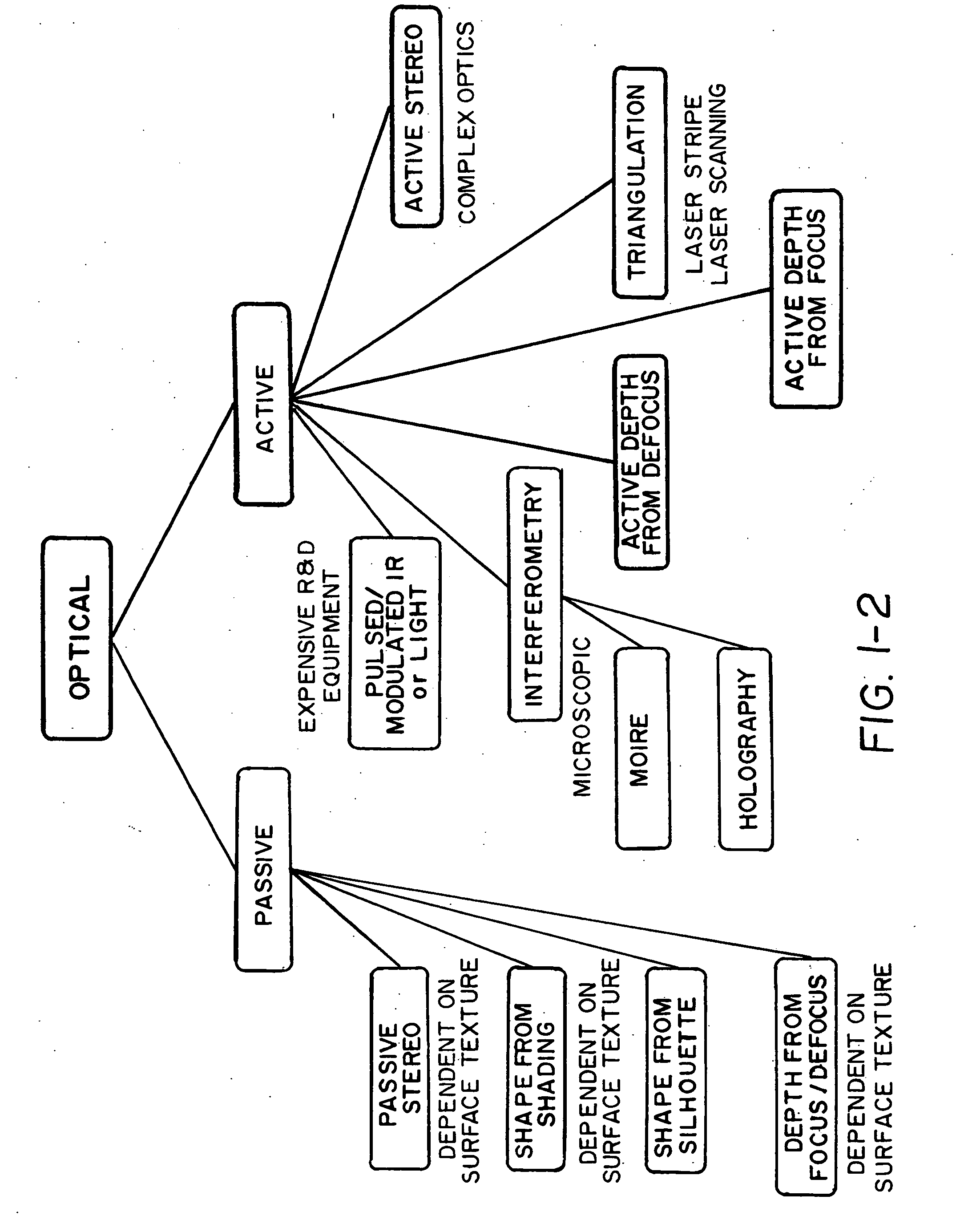Apparatus and methods for the volumetric and dimensional measurement of livestock
a technology of volumetric and dimensional measurement and livestock, applied in animal husbandry, poultry processing, butchering, etc., can solve the problems of inability to track, inaccurate volume estimation, and inability to analyze three-dimensional volumes in only two dimensions, so as to increase the speed of acquiring these measurements and improve accuracy
- Summary
- Abstract
- Description
- Claims
- Application Information
AI Technical Summary
Benefits of technology
Problems solved by technology
Method used
Image
Examples
Embodiment Construction
[0554] The present invention concerns novel methods and apparatus for obtaining volumetric, curvilinear (surface) and linear measurements of livestock animals and full carcasses, specifically cattle and hogs. As used herein, the term “animal” means both live animals as well as carcasses. Important goals of the invention are to provide significantly improved accuracy over existing technology and also to increase the speed of acquiring these measurements.
[0555] The apparatus of the invention comprises three cameras and data processing techniques to achieve 3D data sets that are a dramatic improvement over silhouette, profile or even two-dimensional (2D) video images that may possess grayscale or color information. FIGS. 2-2A and 2-2B graphically illustrate the power of the three-dimensional data set for cattle and hogs, respectively. These Figures show animal data sets which are oriented in a three-axis, coordinate system (though other coordinate systems such as cylindrical or spheri...
PUM
 Login to View More
Login to View More Abstract
Description
Claims
Application Information
 Login to View More
Login to View More - R&D
- Intellectual Property
- Life Sciences
- Materials
- Tech Scout
- Unparalleled Data Quality
- Higher Quality Content
- 60% Fewer Hallucinations
Browse by: Latest US Patents, China's latest patents, Technical Efficacy Thesaurus, Application Domain, Technology Topic, Popular Technical Reports.
© 2025 PatSnap. All rights reserved.Legal|Privacy policy|Modern Slavery Act Transparency Statement|Sitemap|About US| Contact US: help@patsnap.com



